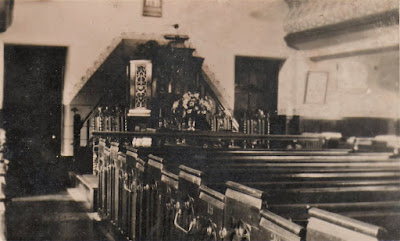November 2016 marks the 152nd anniversary of the foundation of our church building here in Lower Lydbrook. There had been a Baptist presence in Lydbrook since 1823, apparently under the support of Edward Goffs charity, but the initiative for the foundation of the current ministry dates from 1857 when 12 members left Leys Hill Baptist Church near Ross-on-Wye to start a church in what later became public reading rooms.
By 1863 the church was thriving to the extent of having its own minister, and work was started on the present church and schoolroom in 1864, and completed by 1875.
There are some early photographs of the church community reproduced below, with notes.
This was the local Baptist Association Assembly, taken in 1912
I presume this is a group photograph of the minister and deacons. The minister has been identified as Mostyn Jones, who served in the 1910s to 1920s, and one of the other gentleman as the grandfather of the late Mrs. Joyce Powell.
This photograph has a note on the back saying 'Baptist Bible Class, Lydbrook.
This one has a note on the back saying 'Helpers at Gloucestershire and Herefordshire Association meetings 1912. Presumably this was the occasion commemorated in the second photograph from the top. The Gloucestershire and Herefordshire Association no longer exists, and Gloucestershire is now part of the West of England Baptist Association, and Herefordshire is now part of the Heart of England Baptist Association.
An old photograph of the interior before re-ordering in the 1990s(?). The pews had to be removed because of woodworm, and parts of the pulpit also no longer exist, presumably due to the same cause. The railings in front of the communion table have also disappeared.
A lovely picture of the Harvest Display in 1939, which must have been rather poignant as the Second World War continued, and rationing became the order of the day. Look at those impressive piles of fruit and vegetables, and beautiful vases of roses.
I am told this is another local Baptist Association gathering, and I would guess this is post Second World War.
Finally, a rare shot of the Upper Schoolroom, which was used until relatively recently for church meals. It certainly looks a more relaxed and informal occasion.
.bmp)
.bmp)
.bmp)
.bmp)
.bmp)



















